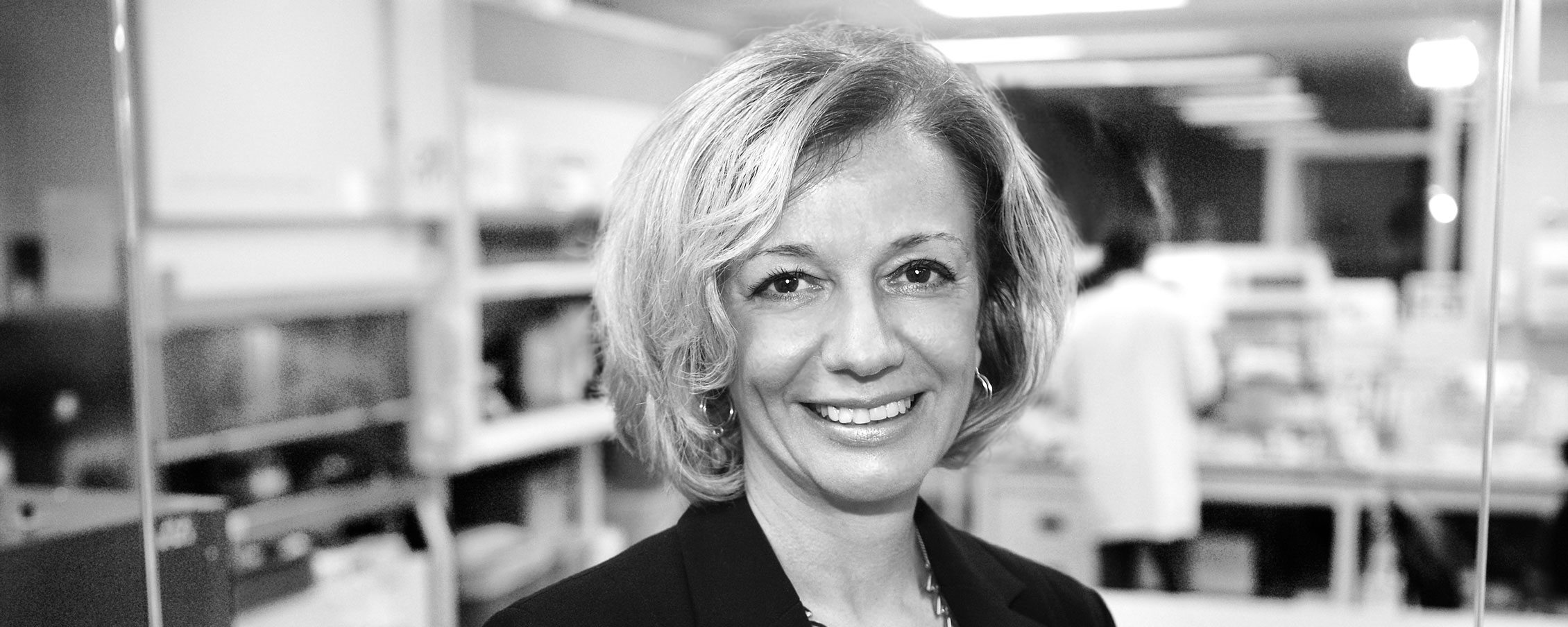Health-care systems across the world require transformation. That axiom guides Daniela Crivianu-Gaita as the CIO of Gamma-Dynacare, an organization that operates laboratories and health-service centers throughout Canada. She’s on a quest to shift how health care operates, and from cloud and mobile computing to health-care analytics, numerous technologies are available to kick-start that change. “It’s just a matter of understanding the priorities,” Crivianu-Gaita says. “Where do you start with the digital transformation, and how do you best go about it?”
DANIELA CRIVIANU-GAITA’S GUIDING PRINCIPLES
Find your passion. Students often ask Crivianu-Gaita how they can plot a successful career. “Trying to decide when you’re twenty what your career will look like when you’re forty—it doesn’t work like that,” she says. “It’s nice to think about the future, but you can only find your path by finding your passion, and that requires trying different things.”
Have a deep desire to understand the field. “I fell in love with health informatics, but it was a lot of work to understand the field because the health-care industry is so complicated,” Crivianu-Gaita says. Even the same types of players, like physicians, can have different perspectives depending on where they practice and the type of patients they see. “Understanding those perspectives allowed me to work with my teams to develop the best solutions to respond to business needs.”
Focus on patients. “Although I don’t interact directly with patients, it’s about the patient,” Crivianu-Gaita says. “You have to ask questions. Whether you’re deploying a technology solution or implementing a process, ask what the benefit will be to the patient and when. That drives a mindset, a conversation, that puts you on the best possible path to achieve your goals.”
Crivianu-Gaita has been continually asking those questions throughout her career in health-care IT. In 1998, after immigrating to Canada with her husband and son from Romania, she knew exactly where her passion lay and applied only for health informatics roles. She began working for the Hospital for Sick Children in Toronto (SickKids) and implemented the hospital’s diagnostic-imaging information systems; she gradually became involved in more enterprise-wide projects. By 2008 she was CIO and vice president of information management and technology.
The hospital, an academic facility focusing not just on delivering the best care to children but also on advancing research related to child health, opened a new facility to support its 2,000 researchers in 2013. The provisioning of technology solutions to support research activities and the huge amount of data captured became keys to the success of that facility and illustrated to Crivianu-Gaita exactly how technology can change health care.
Now, when she talks to students about career options in the IT industry, Crivianu-Gaita encourages them to think outside the banking or Silicon Valley boxes, using her own work in health-care IT as an example of how they can make a real impact in a data-driven field. “The amount and type of data being produced in health care, and the resulting impact you can make, motivates me each and every day to work very hard, because I know that even though I’m not interacting with patients, I am contributing in a different way to their well-being,” she says.
“We didn’t have any metrics,” Crivianu-Gaita says. “So we had to develop a solution to capture the wait times.” They found an answer in a simple application that uses a barcode scanner to determine when patients arrive at a center and when service is complete. “We didn’t overthink the technology solution,” she says. “It was simple from a technology perspective—all we needed to acquire were some barcode scanners and deploy them—but now we have information that we can use to make business decisions, in terms of patient centers, to reduce wait times. That is already having a significant impact on the customer experience.”
Understanding the specific needs of health-care IT has been Crivianu-Gaita’s biggest hurdle, and she’s surmounted it by approaching each obstacle with data-driven solutions. And facing the challenges of emigrating and working her way through the male-dominated IT field has never slowed her down. “I like to look at challenges as opportunities and figure out how I can seize them,” she says.
In 2014, Crivianu-Gaita was honored as one of the Top 25 Women of Influence in Canada, for her work at SickKids. The hospital’s CEO and president Mary Jo Haddad said that when Crivianu-Gaita first came to Canada, she had to tackle an initial difficulty with English as her second language, and a new culture, but she leaned on her excellent tech skills and learned quickly how to implement new products that helped SickKids improve data analysis and patient care.
“At the end of the day, it’s not only about the technology—that’s only one dimension. It’s about people and processes.”
For Crivianu-Gaita, the health-care industry holds multiple layers, especially when considering the ways health care is delivered across the world. “Understanding those aspects is important, as is understanding how clinicians practice, why workflows are the way they are,” she says. “Because at the end of the day, it’s not only about the technology—that’s only one dimension. It’s about people and processes. For me, that took a lot of effort, and will continue to take a lot of effort, if I want to do a good job.”

